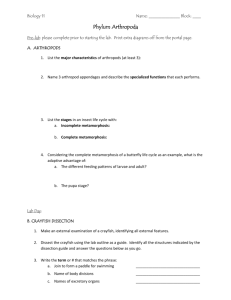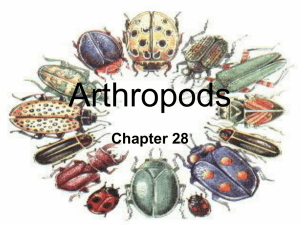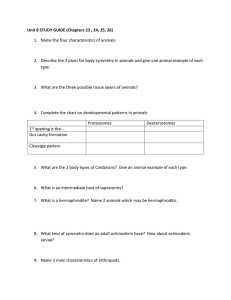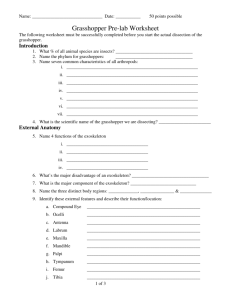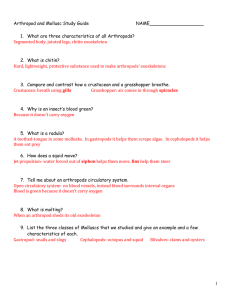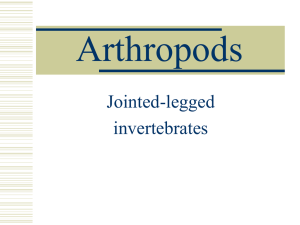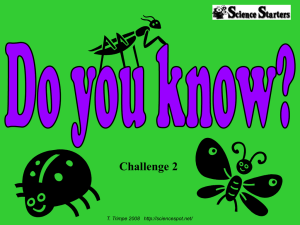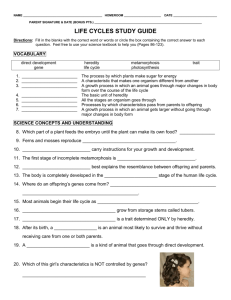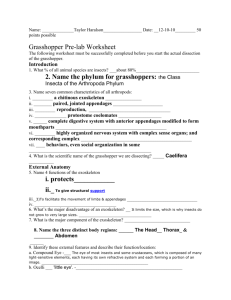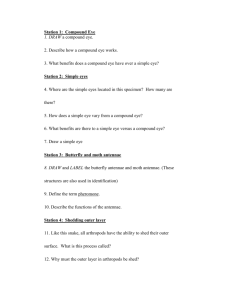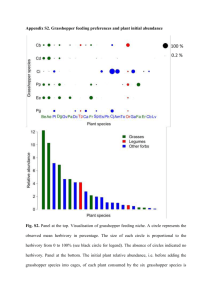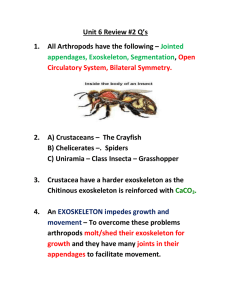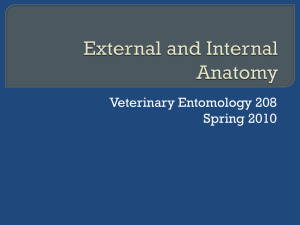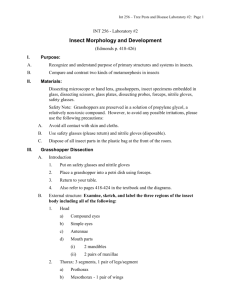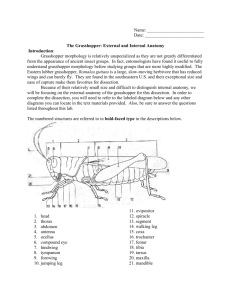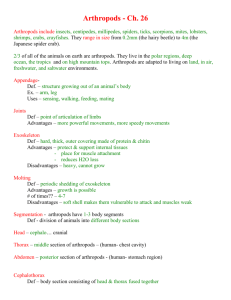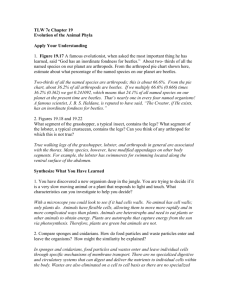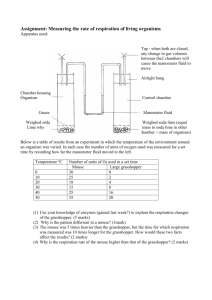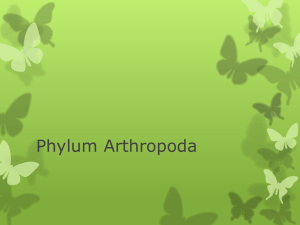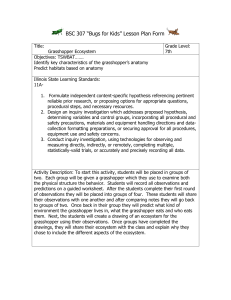16B Arthropods
advertisement
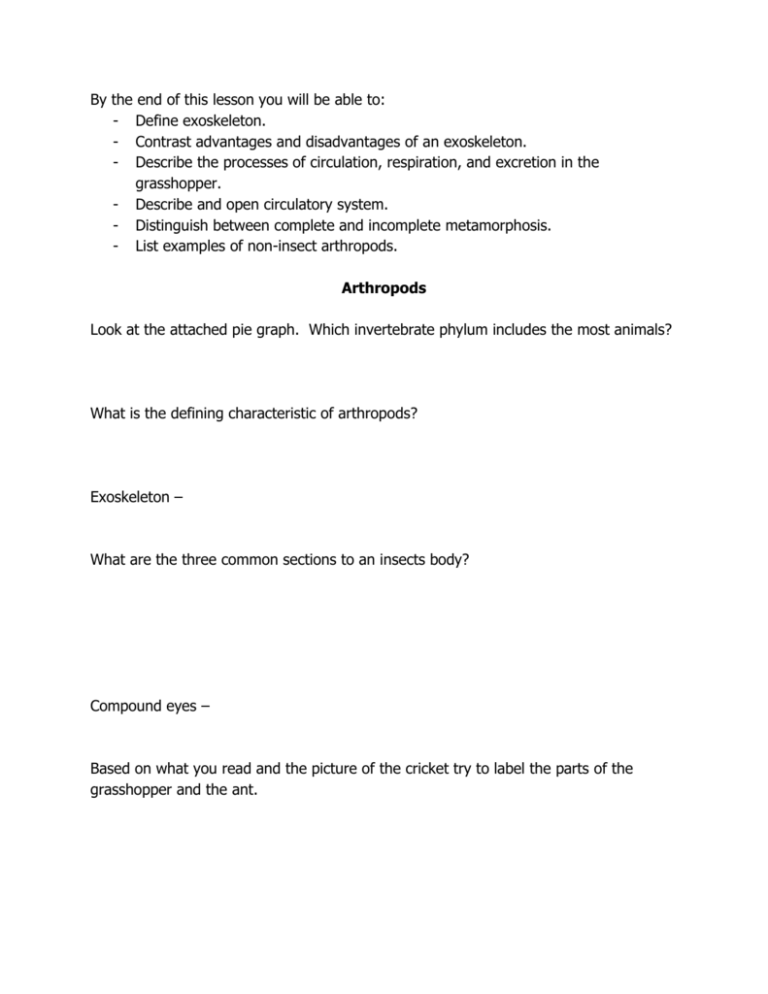
By the end of this lesson you will be able to: - Define exoskeleton. - Contrast advantages and disadvantages of an exoskeleton. - Describe the processes of circulation, respiration, and excretion in the grasshopper. - Describe and open circulatory system. - Distinguish between complete and incomplete metamorphosis. - List examples of non-insect arthropods. Arthropods Look at the attached pie graph. Which invertebrate phylum includes the most animals? What is the defining characteristic of arthropods? Exoskeleton – What are the three common sections to an insects body? Compound eyes – Based on what you read and the picture of the cricket try to label the parts of the grasshopper and the ant. Read Facets of Zoology: Armor of Knights and Arthropods. Create a T-chart to contrast the advantages and disadvantages of an exoskeleton. Advantages Blood – Heart – Artery – Open circulatory system – Tracheae – Spiracles – Excretory tubes – Disadvantages Describe circulation in a grasshopper. Describe respiration in a grasshopper. Describe excretion in a grasshopper. Label the parts of the circulatory, excretory, and respiratory systems on the grasshopper. Molt – Incomplete metamorphosis – Metamorphosis – Nymphs – Complete metamorphosis – Larva – Pupa – Label the stages of the metamorphosis on the two attached pictures and label if it is complete or incomplete. Describe how you know. List some arthropods that are not insects: Read Facets of Zoology: The Society of the Bee Describe the structure of an insect society.
